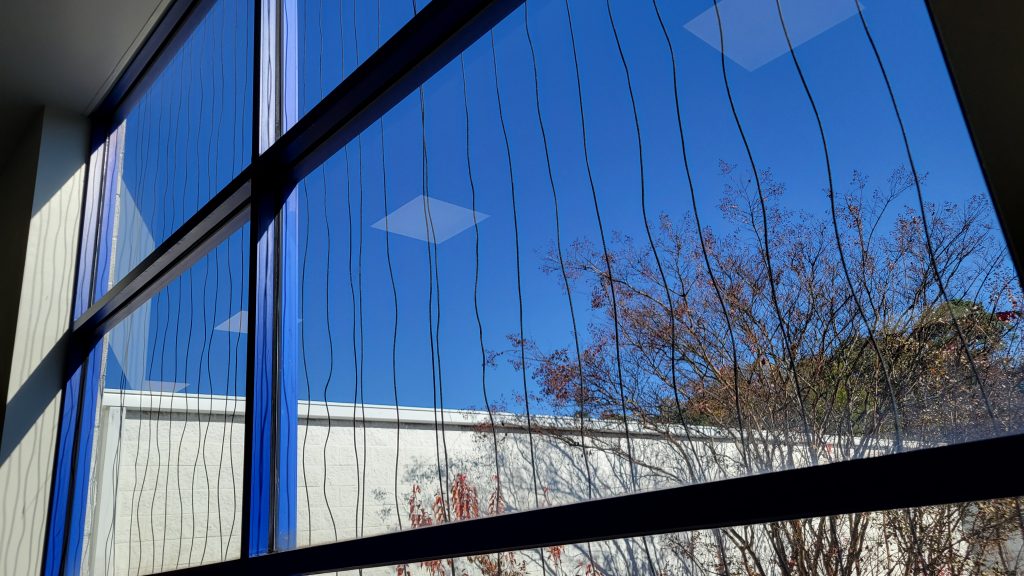New floor material, equipment, and layout are not the only features of our fabulously refurbished Fitness Floor. Members have also noticed something different about the large southeast-facing window overlooking the Sokol exit.
Looking from the inside out, it’s hard to miss the series of vertical paracords spread across the length of the glass every few inches from top to bottom along the outside. The paracords help mitigate bird strikes.
Window collisions are the second leading cause of bird mortality, with one estimate putting the annual toll across the U.S. at nearly one billion deaths.

Collisions can happen when birds see trees and sky reflected in windows and think that’s what they’re flying to. At The J, the problem is most evident when cedar waxwings (pictured in the banner above) flock to eat the berries in the holly trees lining one side of the covered Sokol walkway. Too often, they think they’re flying to clear skies but instead experience a deadly encounter.

The issue was mentioned to Andrew Lydeard, program coordinator at Alabama Audubon. He was visiting The J to discuss possible nature programming. He told a colleague who was coordinating Alabama Audubon’s Project Safe Flight volunteers, who have been documenting bird-window collisions in Birmingham and across the state.
“The good news is that we know how to fix it,” says Lianne Koczur, science and conservation director for Alabama Audubon. The cords, just one of a number of possible treatments, prevent collisions by breaking up reflections while presenting a physical barrier to the birds.
“These simple paracord ‘curtains’ will likely save a lot of birds’ lives, and we hope efforts like this will continue to expand and become the norm in Alabama,” Lianne explains. “We’re so glad The J brought their problem to our attention and wanted to do something about it.”
Thanks to Alabama Audubon for providing materials for the project and to LJCC Facilities Manager Doug Hocutt for the physical installation.
